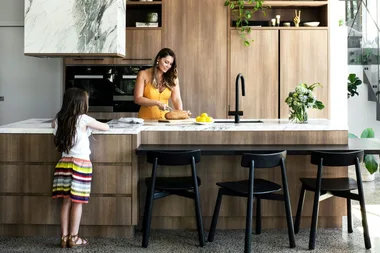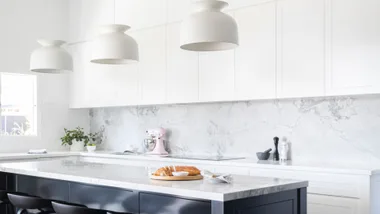Ask any interior designer for their best kitchen lighting ideas and you’ll be faced with a checklist prompting you to consider how you prepare and eat meals as a family, entertain guests and even study and work in this busy zone. And, as interior designer Brett Mickan points out, choosing the best kitchen lighting can prove challenging due to this multipurpose nature. “You want well-lit areas when preparing food, but when entertaining, you don’t want the room to be lit up like a stadium,” he says.
In a space that plays such a pivotal role in our homes and lives, it’s crucial to invest in flexible kitchen lighting options that will rise to any occasion and it’s more than jumping on the latest kitchen lighting trends. Here’s everything you need to know about the best lighting for the kitchen.

What type of kitchen lighting is best?
Before you begin daydreaming about new pendants or wall-mounting a host of sconces, grab your checklist and consider the variety of kitchen lighting solutions on offer and what will work for you. Almost every surface in your kitchen can be illuminated for purpose or pure pleasure – beyond ceiling lights, to wall and cabinet lighting, LED task lighting and of course natural light in the kitchen if you’re in a position to channel nature.
Kitchen pendant lighting
As far as feature lighting goes, there are plenty of options. Kitchen pendant lights make a popular choice for kitchens, directing light onto food prep surfaces and demarcating separate zones. They certainly command a presence, whether you opt to hang a statement oversized pendant, three identical shades in a row or a cluster of different shapes or heights as an attractive feature. “Consider hanging pendants a little lower than usual over the island bench. It grounds the space and adds interest at eye level,” says Marie Botsis-Premici, co-founder of The Montauk Lighting Co.
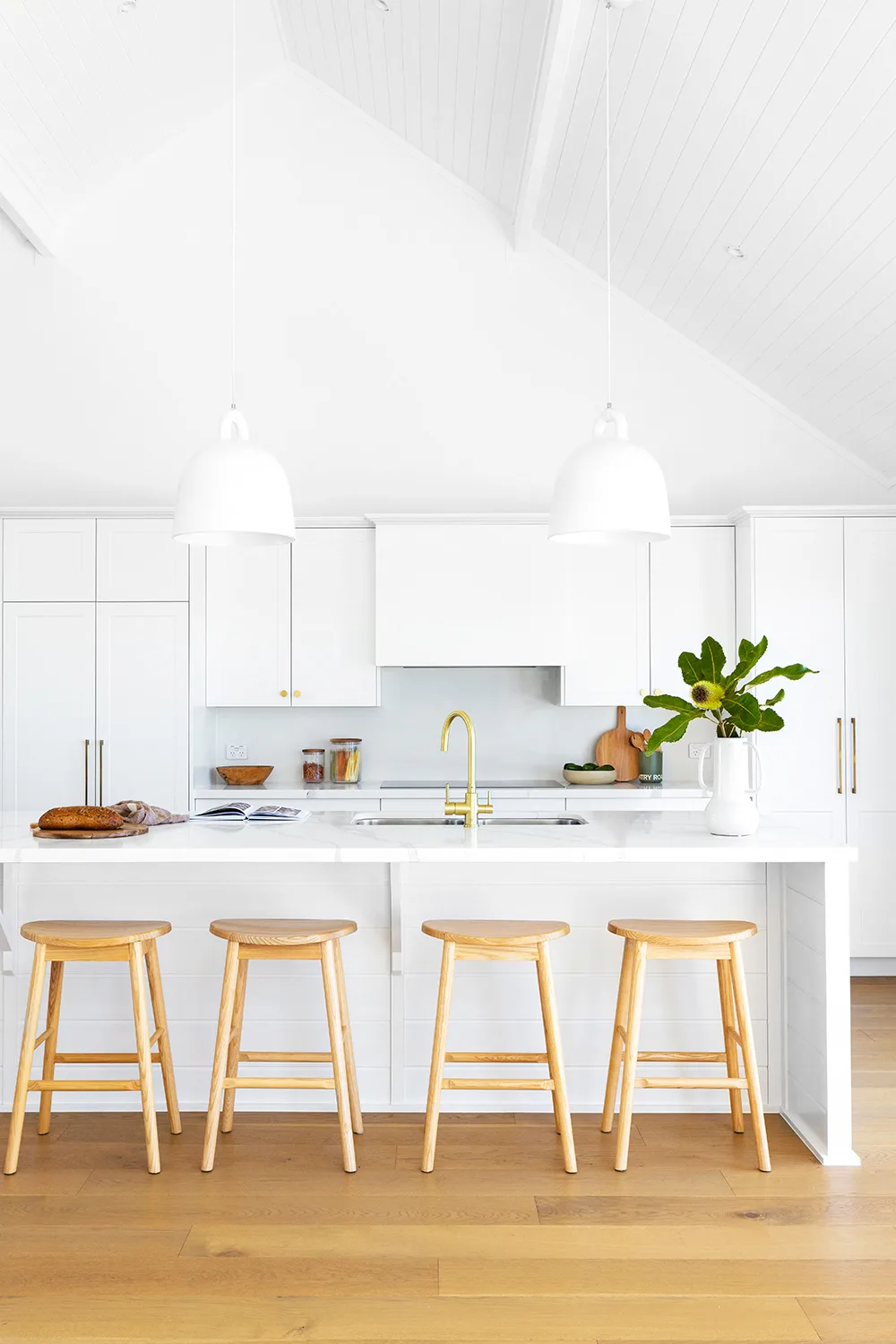
Kitchen wall lighting
Wall lights or sconces are a more subtle option, adding both style and practicality. Try them in small, narrow kitchens, or use them to light a washing-up area or illuminate artworks or display shelving. “They’re ideal for adding task lighting without flooding the entire area with light,” explains Brett. Be sure to work wall lights into your kitchen design from the beginning, as retrofitting down the track can be costly. “Given that the kitchen will generate steam, oil splatter and the like, choose finishes that are easily wiped over,” Marie adds.
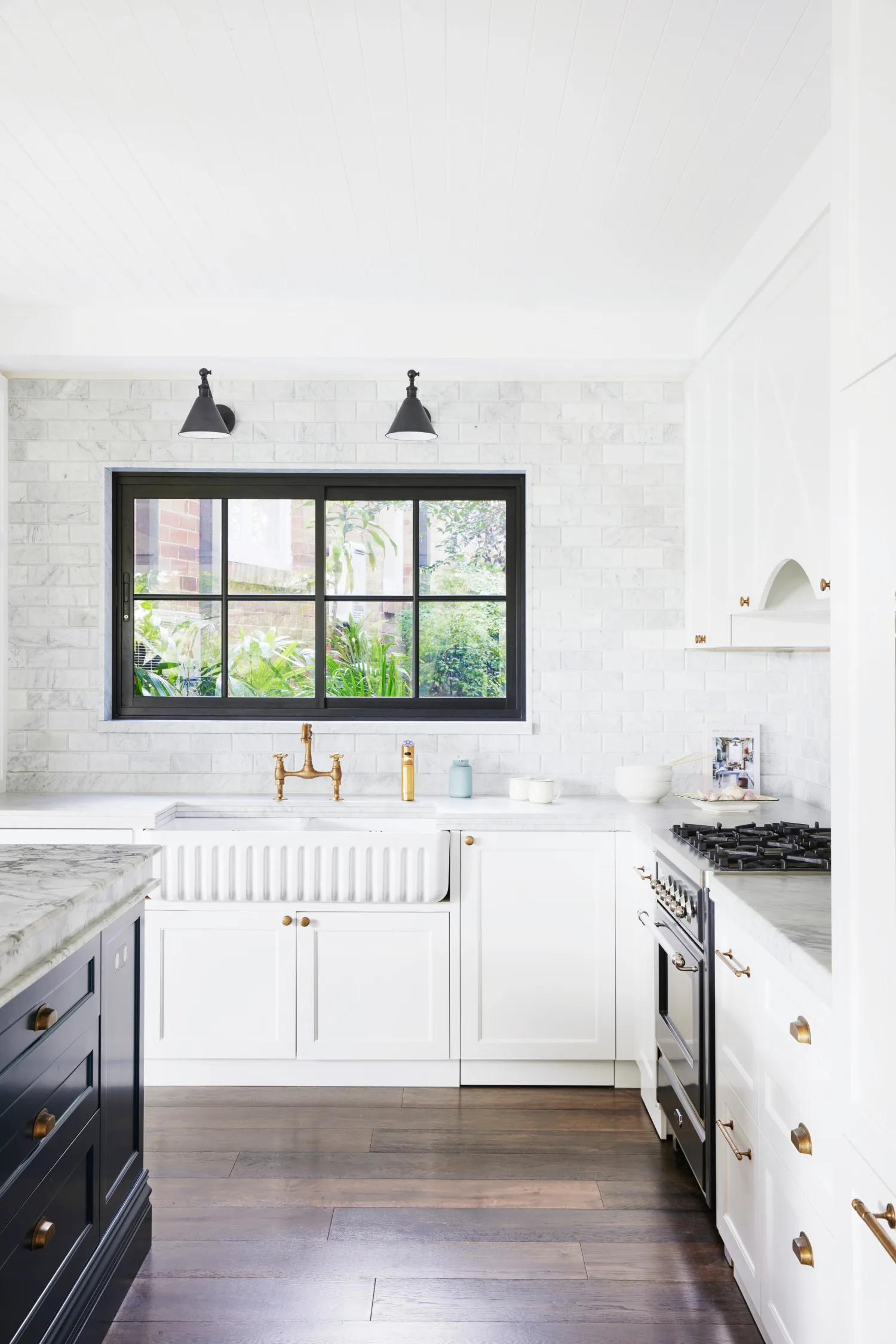
Decorative kitchen lighting
Given so many modern kitchens are part of an open-plan living area, kitchen ceiling lights have taken a more decorative turn, using materials and textures that feature elsewhere in the home to create ambient lighting in the kitchen. “During the COVID-19 lockdowns, we saw a push for more natural materials like alabaster, wicker and rattan, soft linen and even soft brass finishes, with people looking to create a cosy, comfy and secure sanctuary at home,” says Scott Robinson, product and lighting designer at Beacon Lighting.
When adding lighting to your kitchen, select items that tie in with the colours and styling.
“It’s important to fill your home with elements you love, however, there is a trick to making this work,” says Brett. “If a home has a strong architectural style, minimise the architectural detail to its original state to create a clean palette for your style. For example, a Federation home with patterned ceilings and ornate moulding with a crisp coat of paint can be the perfect backdrop for a contemporary light fixture.”
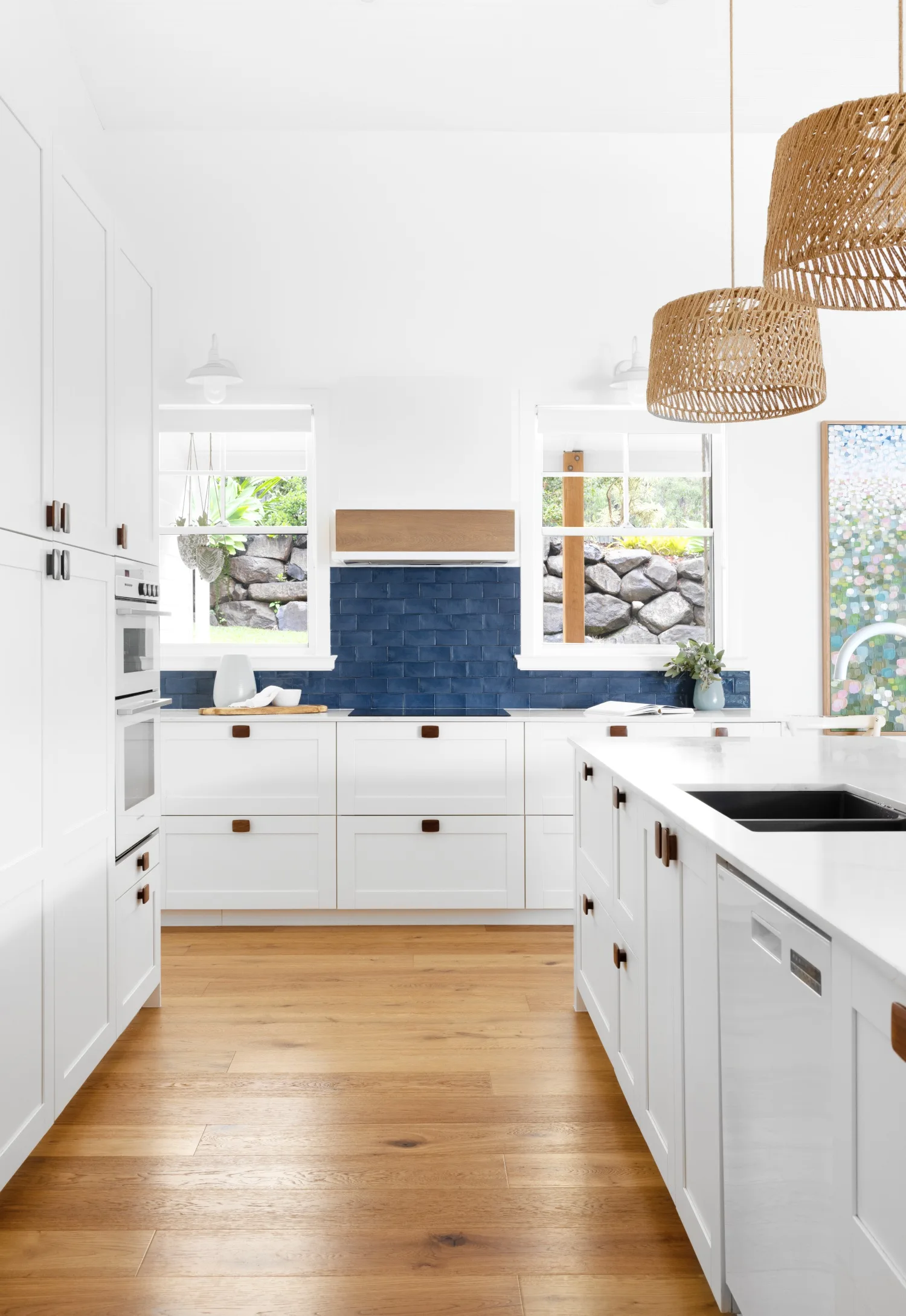
How to layer light in the kitchen
Every kitchen is different, and there’s no one-size-fits-all solution to lighting this zone. “It’s important to look at thespace holistically, thinking about each area of the kitchen, how it’s going to be used and how best to light it,” says Marie.
To achieve a flexible, layered lighting scheme that addresses the myriad needs of the room, look beyond conventional ceiling lights and aim for a mixture of ambient, task and accent lighting. Ambient light illuminates the room and adds to its overall atmosphere, be it bright and welcoming or warm and intimate.
Kitchen bench lighting
Task lighting brings work areas like benchtops, stovetops or sinks into focus, while accent lighting can be used as a decorative element or to highlight specific areas like splashbacks, cabinetry or pantries – even in a small kitchen. “As a general rule, invest in feature lighting to suit the space, then keep all other lighting functional yet discreet,” says Brett.
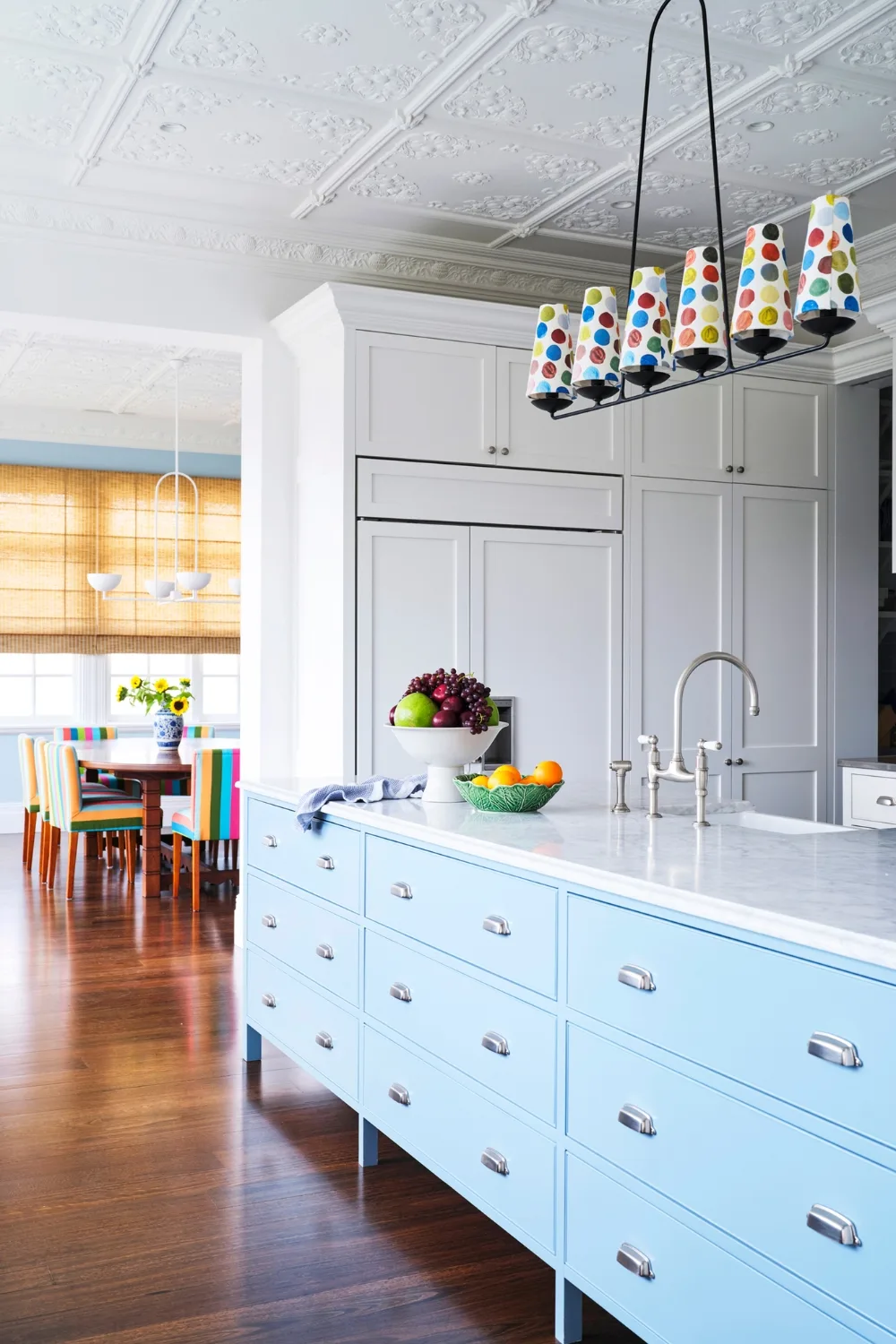
“The kitchen should be considered as part of the overall design scheme”
Brett Mickan, Interior Designer
Kitchen ceiling lighting ideas
The experts are divided when it comes to downlights. Scott believes they have a place when incorporated as part of a considered lighting plan.
“They provide a great concentration of light and are an inconspicuous option,” he says. However, both Marie and Brett feel less is more. “Recessed downlights need to be used sparingly,” says Brett. “The kitchen needs to be functional, but a large bank of downlights will date the space dramatically.”
They can work well in areas where you need a lot of light – ideally on a dimmer switch so you can turn them up when you need to prep food or when the kids are doing their homework at the kitchen table, and down low (or completely off) when you need to switch the mood.

Lamps in the kitchen
Once the preserve of bedrooms, studies and living rooms, table lamps provide a soft glow and direct light source to any kitchen surface they adorn and can be tied in with the rest of the home’s decor. Less intense than overhead lighting, “they’re perfect for an evening ambience,” Brett says.
Use lamps to fill a corner, flank a benchtop or match to your cabinets for a streamlined, polished look. They can be hardwired into your kitchen island or simply plugged into an electrical outlet; look for cordless, rechargeable options for further flexibility. They’re especially great if you’re a renter as they’re a less expensive, impermanent solution that you can take with you when you leave.
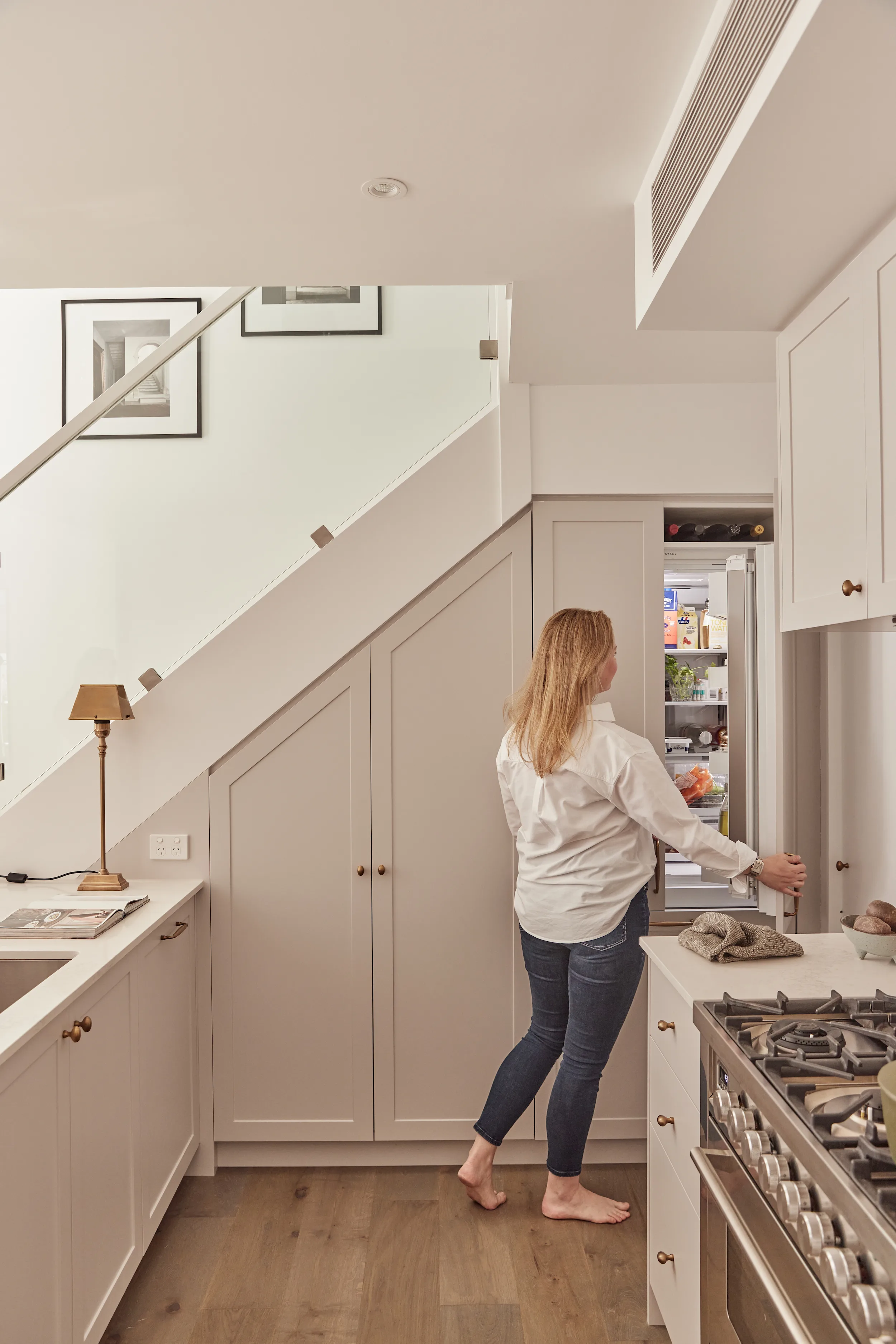
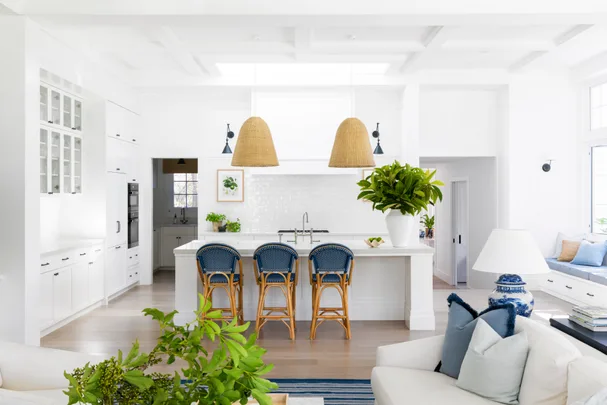 Photography: Simon Whitbread / Styling: Corina Koch
Photography: Simon Whitbread / Styling: Corina Koch
